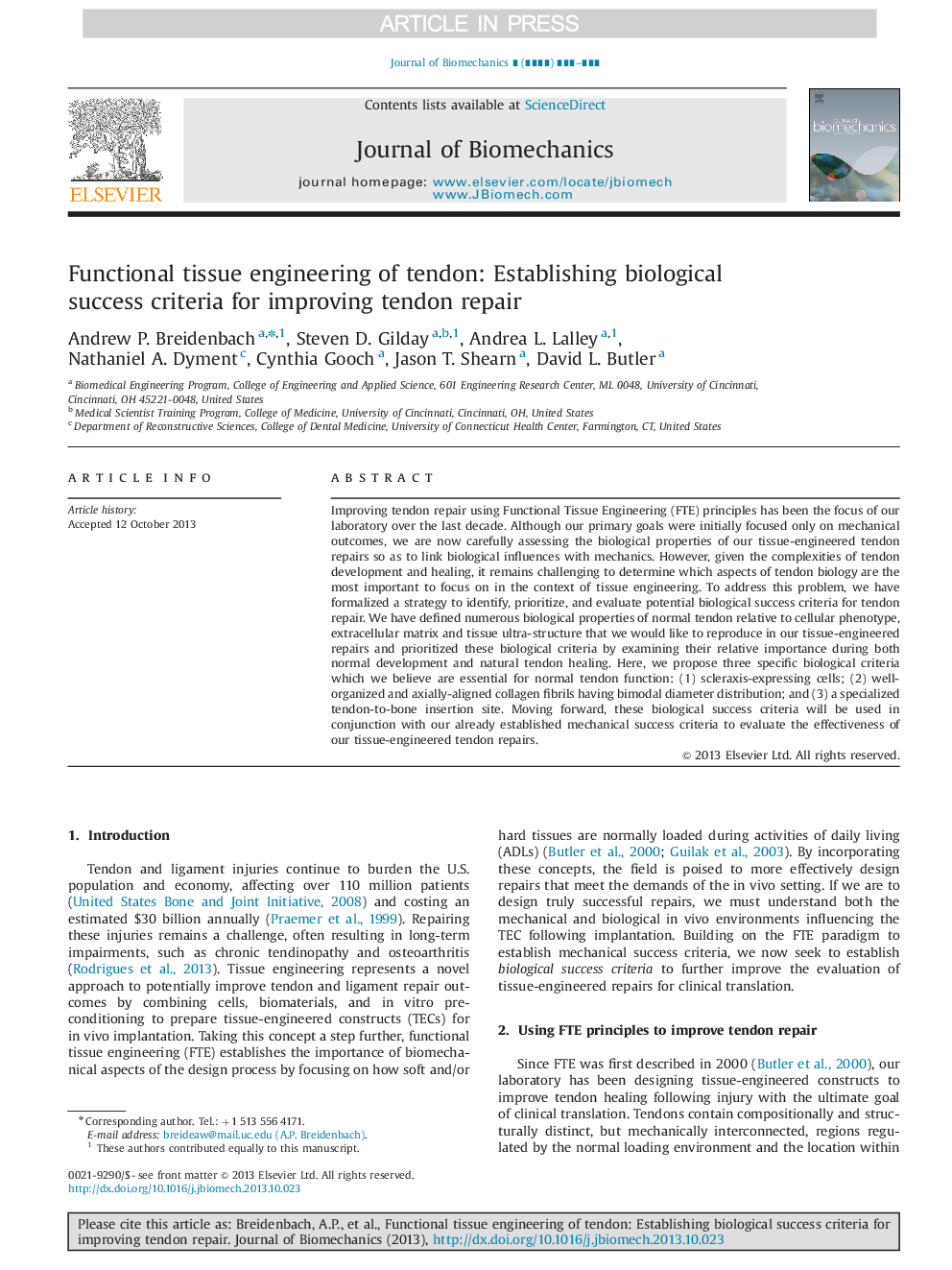| Article ID | Journal | Published Year | Pages | File Type |
|---|---|---|---|---|
| 10432053 | Journal of Biomechanics | 2014 | 8 Pages |
Abstract
Improving tendon repair using Functional Tissue Engineering (FTE) principles has been the focus of our laboratory over the last decade. Although our primary goals were initially focused only on mechanical outcomes, we are now carefully assessing the biological properties of our tissue-engineered tendon repairs so as to link biological influences with mechanics. However, given the complexities of tendon development and healing, it remains challenging to determine which aspects of tendon biology are the most important to focus on in the context of tissue engineering. To address this problem, we have formalized a strategy to identify, prioritize, and evaluate potential biological success criteria for tendon repair. We have defined numerous biological properties of normal tendon relative to cellular phenotype, extracellular matrix and tissue ultra-structure that we would like to reproduce in our tissue-engineered repairs and prioritized these biological criteria by examining their relative importance during both normal development and natural tendon healing. Here, we propose three specific biological criteria which we believe are essential for normal tendon function: (1) scleraxis-expressing cells; (2) well-organized and axially-aligned collagen fibrils having bimodal diameter distribution; and (3) a specialized tendon-to-bone insertion site. Moving forward, these biological success criteria will be used in conjunction with our already established mechanical success criteria to evaluate the effectiveness of our tissue-engineered tendon repairs.
Related Topics
Physical Sciences and Engineering
Engineering
Biomedical Engineering
Authors
Andrew P. Breidenbach, Steven D. Gilday, Andrea L. Lalley, Nathaniel A. Dyment, Cynthia Gooch, Jason T. Shearn, David L. Butler,
